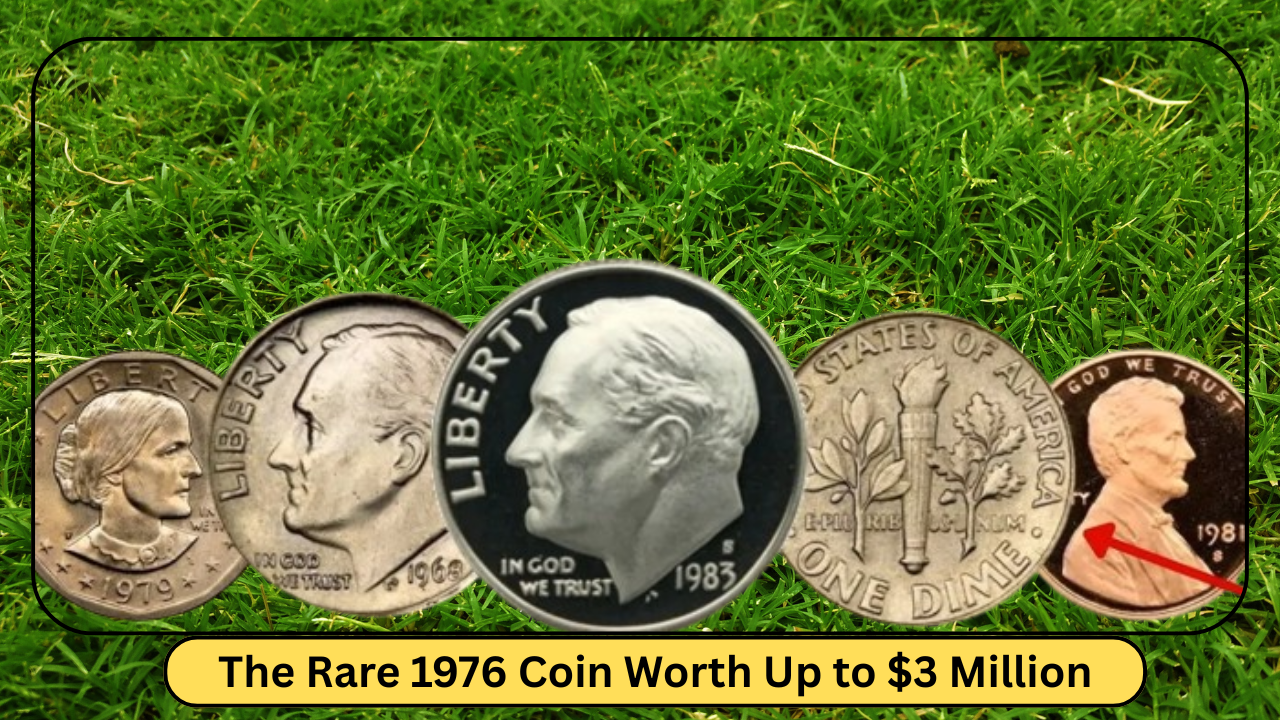Ever pull a quarter from your pocket and wonder if it’s special? A rare 1976 Bicentennial Quarter could be worth up to $3 million, and these coins are still hiding in change jars, wallets, or cash registers! Minted to celebrate America’s 200th birthday, most of these quarters are worth just 25 cents, but a few with unique errors or features are collector’s treasures. A recent claim of a $3 million sale has sparked a coin-hunting frenzy. Let’s explore why these quarters are so valuable and how you can spot a jackpot in your change.
A Coin That Honors America’s Past
The Bicentennial Quarter was made in 1975 and 1976 to mark 200 years of U.S. independence. It features George Washington on the front with “1776-1976” dates and a colonial drummer boy with 13 stars on the back, designed by Jack L. Ahr. Over 1.6 billion were minted in Philadelphia (no mint mark), Denver (D), and San Francisco (S), mostly in copper-nickel, but some San Francisco coins are 40% silver. While common ones are worth face value, rare errors or special versions can fetch thousands—or, in unverified reports, millions.
Why Some Quarters Are Worth Millions
The $3 million price tag, though not publicly confirmed, likely comes from a super-rare coin with multiple errors or an experimental metal, like a gold or high-silver planchet. Known valuable Bicentennial Quarters include double-die errors, where letters like “LIBERTY” or the date appear doubled, selling for up to $8,400 in 2023. Others struck on the wrong metal, like a dime or silver dollar planchet, can fetch $10,000 or more. A 1976-S silver proof in perfect condition (PR-70) sold for $19,200 in 2019. Collectors pay big for coins in mint condition or with unique mistakes.
How to Spot a Valuable Bicentennial Quarter
You don’t need to be a coin pro to find a treasure. Here’s what to check:
- Dates: Look for “1776-1976” on the front to confirm it’s a Bicentennial Quarter.
- Mint mark: Check under Washington’s neck for “D,” “S,” or no mark. “S” coins are often silver or proof.
- Errors: Use a magnifying glass to spot doubled letters in “LIBERTY,” “IN GOD WE TRUST,” or the date. Look for off-center designs or odd metal colors.
- Edge: Silver coins have a solid silver edge, not a copper stripe like copper-nickel ones.
- Weight: Regular quarters weigh 5.67 grams; silver ones are about 5.75 grams.
| Feature | Common Bicentennial Quarter | Rare Bicentennial Quarter |
|---|---|---|
| Dates | 1776–1976 | 1776–1976 |
| Mint Mark | P, D, or S | Usually S or error-specific |
| Material | Copper-nickel | 40% silver or error metal |
| Estimated Value | $0.25 | $1,000–$3 million (if rare) |
Where to Find These Hidden Gems
With over 1.6 billion Bicentennial Quarters made, they’re still common in circulation. Check your change from stores, vending machines, or bank rolls. Some silver San Francisco coins (11 million uncirculated, 4 million proof) slipped into everyday use, and error coins are out there too. A California man found a double-die quarter worth $5,000 in a coin roll, and others have turned up in flea markets or old piggy banks. The $3 million coin, if real, could be hiding in your wallet or a family coin stash.
What to Do If You Find a Rare Quarter
If you think you’ve got a valuable quarter, don’t clean it—cleaning can wreck its value. Store it in a plastic coin holder to keep it safe. Take clear photos and check for errors or silver content, then compare to known rare quarters online. Contact a grading service like PCGS or NGC to verify its authenticity and condition. If it’s a true gem, auction houses like Heritage Auctions or Stack’s Bowers can help you sell for top dollar. Be wary of quick offers, as scams often target rare coin finds.
Start Your Coin Hunt Today
The $3 million Bicentennial Quarter may sound like a long shot, but real sales of error coins for thousands show these treasures exist. Claims of $14 million or $150 million are likely exaggerated, so trust sources like PCGS for accurate values. With millions of these quarters still out there, your next handful of change could hold a fortune. Grab a magnifying glass, check those “1776-1976” coins for errors or silver edges, and you might find a piece of history worth way more than 25 cents!
